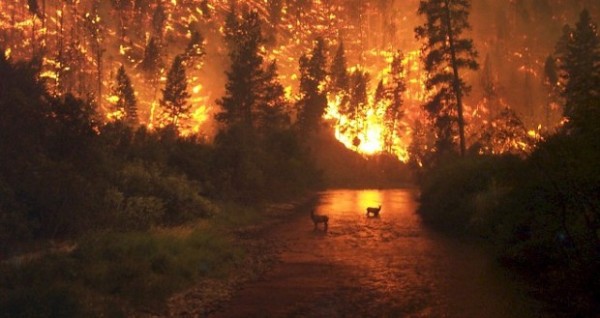By
Global warming has already made parts of the world hotter than the human body can withstand, decades earlier than climate models expected this to happen.
Jacobabad in Pakistan and Ras al Khaimah in the United Arab Emirates have both repeatedly crossed a deadly threshold for one or two hours at a time, an analysis of weather station data found.
Wet bulb temperature (TW) is a measure of heat and humidity, taken from a thermometer covered in a water-soaked cloth. Beyond a threshold of 35°C TW the body is unable to cool itself by sweating, but lower levels can still be deadly, as was seen in the 2003 European heatwave that killed thousands without passing 28°C TW.
Most of the frequency increases were in the Persian gulf, India, Pakistan and south-west North America. But at Jacobabad and Ras al Khaimah, 35°C TW appears to have been passed, the first time the breach has been reported in scientific literature.
“The crossings of all of these thresholds imply greater risk to human health – we can say we are universally creeping close to this magic threshold of 35°C. The tantalising conclusion is it looks like, in some cases for a brief period of the day, we have exceeded this value,” says Tom Matthews at Loughborough University in the UK.
His team corroborated the threshold being breached by looking at another weather dataset, based on temperature and humidity observations and modelling. That analysis suggested several areas of the Persian Gulf will see the possibility of 35ۜ°C TW happening once every 30 years at around 2.3°C of global warming. The world has already warmed about 1°C due to human activities.
Such intense humid temperatures have so far largely affected affluent Gulf states, which have the capacity to cope by investing in air conditioning. But Matthews warns that with continued climate change, the extremes will affect more parts of Pakistan, and India too, which may have not have the capacity to adapt. Even if they they could, it would require huge amounts of energy for cooling, further exacerbating climate if it came from fossil fuels. “We are already exquisitely close, closer than we thought, to that line in the sand,” he says.
While there are uncertainties over temperature and humidity readings from a few weather stations, because of where they are sited or how they are calibrated, Matthews says the overall picture is “unequivocal”.
Steven Sherwood at University of New South Wales in Australia, who was not involved in the research, says it makes a convincing case that the measurements are accurate, though it could not be guaranteed. “The implications of this study are that such extreme conditions which push the tolerance of the human body are not as far off into the future as we thought, at least in a few locations on Earth,” he says.
Clare Heaviside at University College London says the work is broadly in line with existing research, but cautioned against the focus on the threshold of 35°C TW. “It is difficult to link a wet bulb temperature threshold to specific health outcomes, and for different population groups,” she says.






